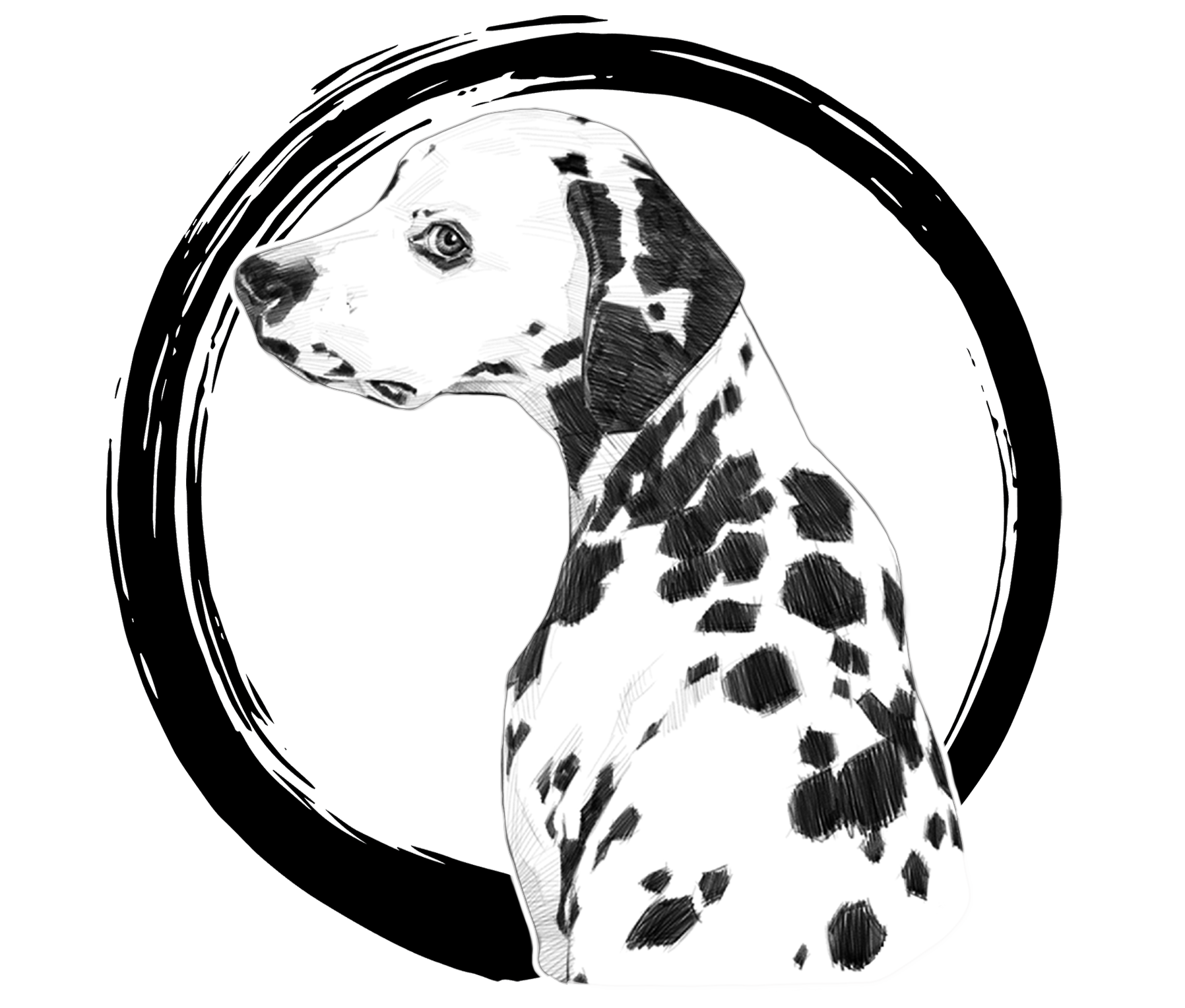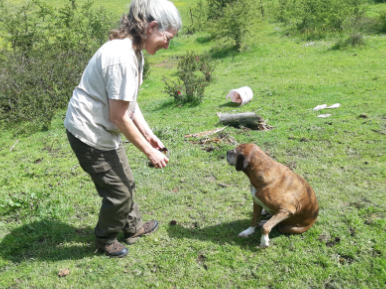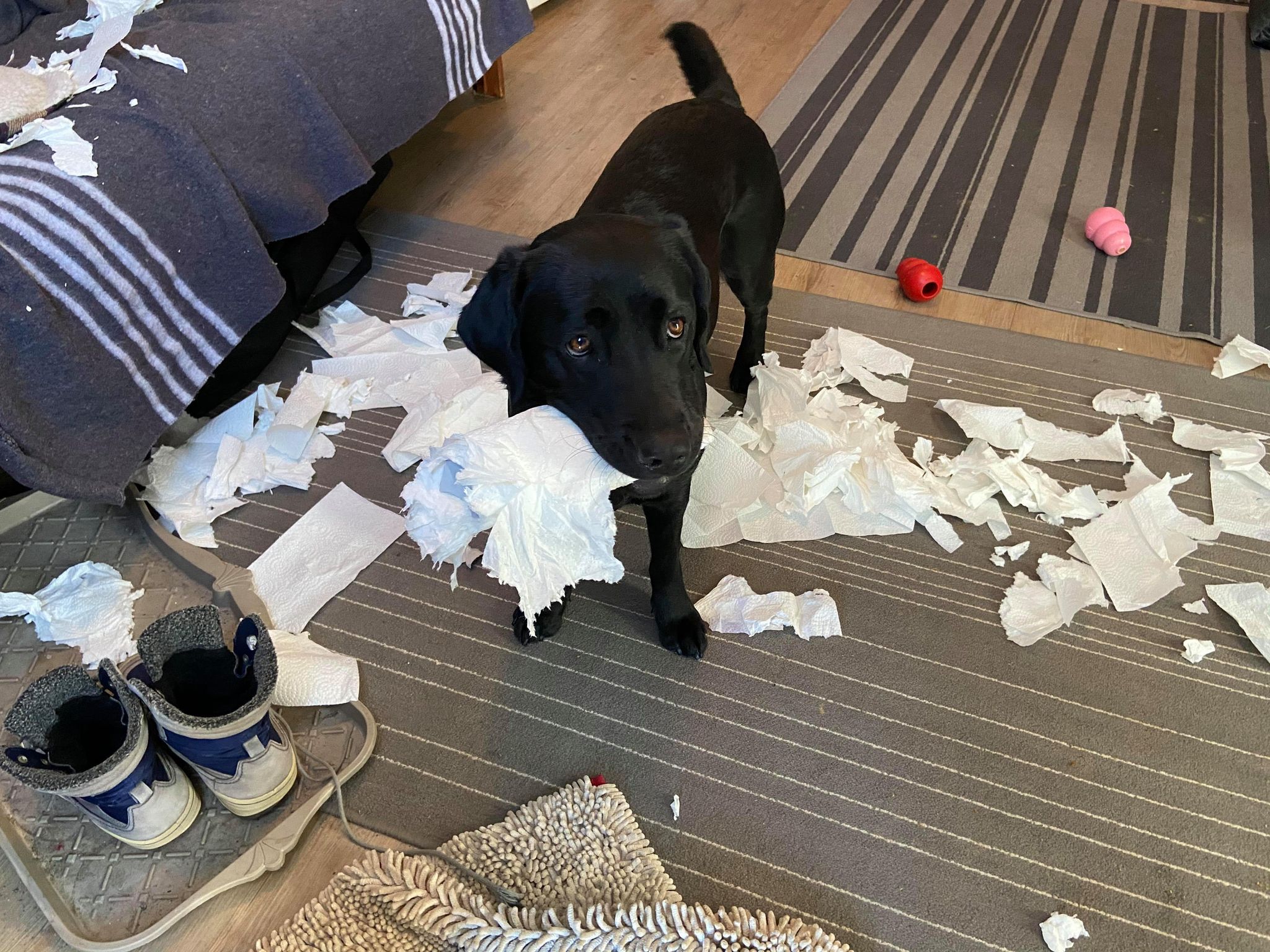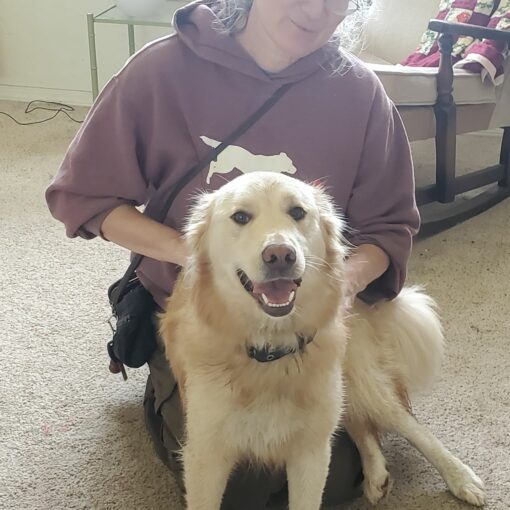How to master frustrated greeters and reactive dogs
If you have a reactive dog (fearful or aggressive or even over- excited response to seeing other dogs or people), you can use classical counter-conditioning, BAT 2.0 or the Engage Disengage protocol. However, three second greetings are a great technique for getting your dog accustomed to low threat greetings and is especially useful when socializing puppies.
Overview
I let pups look at a trigger from a distance at which they are just barely beginning to get excited (just before they are fixated) on a trigger. After 3 seconds, I cue a “let’s go!” in a happy voice and move on quickly in an arc past the trigger (I can use their momentum towards the trigger to get us moving and past it) and then reward heavily 3 to 5 feet past the trigger. I call this the “3 second greeting” routine and use it a lot with puppies and reactive dogs. It is helpful for teaching them that the triggers are relatively boring and not scary.

Detailed Steps
1. Depending on the excitement level of your dog, pick a suitable location where you will see a few people/dogs (or see the same ones several times), at a frequency that will not put him over threshold. This can be at a park where there are fun distractions as well, so he is relaxed and happy. Or it can be in very quiet parking lot, so he is calm before and after the greetings.
2. Walk your dog calmly in the general direction of the trigger. Don’t head straight for it, but act as you would on a normal walk (note that in natural dog greetings they approach on an “arc” towards each other). When you see your dog start to notice the trigger, slow down gently and come to a stop so that your dog can see the trigger clearly for 3 seconds.
3. Now, while your dog is still interested in the trigger, but has not gone over threshold, say “Let’s go!” and start to walk more briskly. Do not walk further towards the trigger, but arc away from it, keeping your dog moving forward.
4. Once you have successfully passed the trigger, and your dog is no longer trying to look back at it, ideally just a few feet past it, give lots of praise and rewards. Your dog managed to walk past without lunging, barking, cowering, or threatening, so he displayed the exact behavior you want. Make sure he knows how proud you are of him.
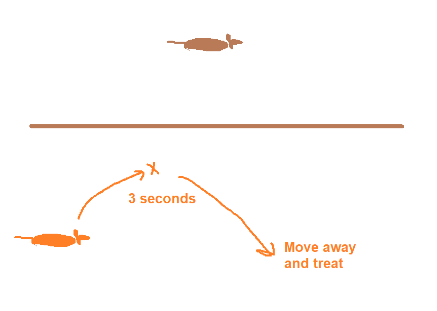
5. Repeat this several times. After 3 or 4 repetitions, move away and take a break, play a game, etc. before trying again. Five or six sets is the most to aim for in a day with a non-reactive puppy. Reactive adult dogs may only be able to take 1 to 3 set
6. Once your pup is able to maintain his composure well enough that we are able to actually sniff a trigger, my protocol changes a bit for investigating people. I will put a few treats at the ground near their feet (you can actually put some on their feet !) to encourage them to sniff. Again, 3 seconds and we are off. The trigger (poor person!) never gets to say hi.
Troubleshooting
1. If your pup pulls to get to the trigger, you are waiting too long before doing your slow stop. Ideally, come to a gently stop before your pup starts to pull. Many dogs will naturally halt with their head up looking at the trigger for a moment—capture this! If your dog doesn’t—you will have to make the choice for them.
2. Dog is “fine” and then fixates on the trigger and you can’t move past. If your trigger is a decoy, ask them to move away. Next time stop your pup about 1/3 further away (e.g. if you were at 10 ft., try 15 ft, if you were at 30 ft, try 45 ft).
3. Your pup holds back and doesn’t want to approach the trigger. Great! Stop when they first give you the “uh oh!’ signal (or a little further away).
Next Steps
Once the puppy is doing really well, for pups ready to greet strangers, I switch over to Kikopup’s “no jumping” method and start rewarding the pup as soon as they look up at the trigger. After a few repetitions, I withhold rewards for just a few milliseconds and see if we can get a voluntary sit. By this time the puppy should have lots of experience with you rewarding for a sit, so it should be fairly natural 🙂
For reactive dogs, I’ll switch over to Grisha Stewart’s BAT 2.0 to wean the dog off of treats. This method puts YOU firmly in the driver’s seat.
About the authors:
Kate Coberly is best known as the founder of DT101 Community. She is a Certified Dog Behavior Consultant with IAABC and has a PhD in biology. She currently works locally and via skype on dog behavior issues, including aggression and OCD. Caitlin lives on her farm in western Oregon with her 7 dogs, 3 horses, one cat and one awesome big pink primate.
Jane Davidson is one of the regular contributors to the DT101 Academy. She has been teaching for over 10 years and currently works with incarcerated youth and private clients at her Eureka! facility in north Texas.
